Turning sandcastles into stone - It’s not quite as impossible as it once was. Starting your own business used to be just for the cashed up, big ideas people, the free range kind who couldn’t stand the idea of being cooped up in an office cubicle. But these days it’s so much easier. It might start off as a side hustle. Perhaps it’s an evening and weekend gig or perhaps it just plods along passively in the background while you spend your 9-5 in a chicken coop… I mean office cubicle. Perhaps it’s a part time gig you’ve built up over a few years, but you still have another income stream to fall back on as your business grows. Or it could simply be a passion project, an offering which lights you up to share, and which fills you with joy whether you make money from it or not. And, with time and dedication, it may also generate a steady income too.
 Whatever kind of business you are wanting to build, with the internet, social media and online stores now exploding with possibility, potential customers and profit making opportunities, and with so many marketing tools at your disposal, all you really need is an idea. If you do have an idea for a business then that’s awesome! Congrats. Now you need to lay down a step by step plan of how to make your ideas become reality.
Whatever kind of business you are wanting to build, with the internet, social media and online stores now exploding with possibility, potential customers and profit making opportunities, and with so many marketing tools at your disposal, all you really need is an idea. If you do have an idea for a business then that’s awesome! Congrats. Now you need to lay down a step by step plan of how to make your ideas become reality.
One of the first steps to helping a business grow from the ground up (after you’ve come up with the million dollar idea of course) is mapping out a business plan. Part of this process is articulating your vision and purpose for your business. These details are like a blueprint for the future of your business, expanding its potential and mapping out its possibilities. A business plan is also a critical first step to getting investors onboard and will assist you in applying for a business loan should you need one.
What is a business plan?
A Business Plan is a document that breaks your business down into bite sized chunks. Everything from your business goals to outlining the targets and strategies for achieving said goals. Anyone who is serious about succeeding needs a business plan. It not only helps the business owner stay focused on the business goals but it also shows interested parties (including credit providers) that a strategy has been put in place to give the business the best possible chance of being successful. So, what should be included in a Business Plan?
Your business plan should include the following:
Executive summary
 This is like the ‘blurb’ on the back of a book – it gets the reader in and sells the story (or in this case your business). It’s an overview of your whole business and its strategy for succeeding. This part usually only contains the highlights, the most important points from the business plan and is easier to put together after the rest of the business plan is complete. You should briefly include who you are selling to, your marketing strategy, outline your future plan and ‘vision’ for your business as well short and long term goals and objectives. You should also outline your projected profit (within a set timeframe), your starting budget and how you will obtain this.
This is like the ‘blurb’ on the back of a book – it gets the reader in and sells the story (or in this case your business). It’s an overview of your whole business and its strategy for succeeding. This part usually only contains the highlights, the most important points from the business plan and is easier to put together after the rest of the business plan is complete. You should briefly include who you are selling to, your marketing strategy, outline your future plan and ‘vision’ for your business as well short and long term goals and objectives. You should also outline your projected profit (within a set timeframe), your starting budget and how you will obtain this.
The business
This is where you detail exactly what kind of a business you own. Here you discuss things such as registration and ABN, your business location, what kind of an organisation it is and how it works, as well as info about who manages and owns the business. You also need to detail the products and services you offer as well as the unique features of your business (what sets your business apart). Other important details include whether you have (or need) insurance, and any other legal considerations.
The market
This is an opportunity to look closely at your chosen market including sale trends for your chosen product. Include any market research you may have done, including surveys or research. Here you discuss your target market (intended customer base - who will be buying your products); how you intend to position yourself in the marketplace and how you plan to achieve your business goals and targets. You need to consider where your products or services fit within the market and how the pricing compares to competitors.
 This part of the report also includes your pricing strategy and potential for growth of the business. It can also be really good do a SWOT analysis here. This is a summary of the strengths, weaknesses, opportunities and threats that exist in relation to your business. Look at the strategies needed to exploit your strengths, protect from your weaknesses, use opportunities presented and counter any threats in the marketplace that might exist. This is also where you showcase your advertising, promotional and marketing strategy.
This part of the report also includes your pricing strategy and potential for growth of the business. It can also be really good do a SWOT analysis here. This is a summary of the strengths, weaknesses, opportunities and threats that exist in relation to your business. Look at the strategies needed to exploit your strengths, protect from your weaknesses, use opportunities presented and counter any threats in the marketplace that might exist. This is also where you showcase your advertising, promotional and marketing strategy.
The future
Stating your Vision or Purpose is like stating the vows on your wedding day. It needs to be heartfelt, carefully considered and meaningful. Each word needs to count, and if done well, a well written purpose will allow for growth and change within your business rather than being limiting. Your vision or purpose should describe your idealised model of what your business will look like under ideal conditions. It should also be short (one to two sentences) and easy to remember.
The mission statement describes how you will achieve the vision. It is another carefully curated phrase which needs to clearly articulate how you will operate and reach your business goals. It should outline your ‘why’ as well as how the business plans to grow and the business’ ‘point of difference’. Then list your goals and objectives as well as a step by step action plan to make the end goal more achievable.
The finance
This is where you discuss how you plan to make money. Here you list the current revenue earned on each product or service offered (if the business is already up and running) as well as the sales trend for each of these. Then you need to review your sales as well as making note of who you have been targeting. You can also mention here if any outside factors affect your sales, such as seasonal, (do your products sell better in summer for example?) or other external factors or changes within your industry which might have an impact on sales. This is also where you list your start up costs, include a balance sheet forecast, a profit and loss forecast as well as expected cash flow and other financial strategies you might have in place.
 Carefully considering who to bank with is also important as a business owner. For example, as a business owner myself, I recently entered my handcrafted aromatherapy products into the ‘Clean and Conscious Awards’. The Clean and Conscious Awards is an awards platform which celebrates ethical, sustainable and natural personal care products. As part of my application process I had to demonstrate how my business prioritises sustainability and ethics. Alongside all of the other ways I ensure my business is sustainable and ethical, it was a great opportunity to share that my chosen bank is Australian Mutual Bank . In my application I was delighted to be able to demonstrate how as a financial institution, AMB is leading the way in the industry in both of these areas. I proudly included a link back to the bank’s website in my application and was confident that my own business ethos aligned with that of my bank’s.
Carefully considering who to bank with is also important as a business owner. For example, as a business owner myself, I recently entered my handcrafted aromatherapy products into the ‘Clean and Conscious Awards’. The Clean and Conscious Awards is an awards platform which celebrates ethical, sustainable and natural personal care products. As part of my application process I had to demonstrate how my business prioritises sustainability and ethics. Alongside all of the other ways I ensure my business is sustainable and ethical, it was a great opportunity to share that my chosen bank is Australian Mutual Bank . In my application I was delighted to be able to demonstrate how as a financial institution, AMB is leading the way in the industry in both of these areas. I proudly included a link back to the bank’s website in my application and was confident that my own business ethos aligned with that of my bank’s.
The type of business account you have will also make a difference to the ease in which a business operates. The Australian Mutual Bank business account for example, allows up to 12 different sub accounts, making tax time a breeze and enables you to divvy up your income into dedicated accounts for things like expenses, tax, wages and more.
It’s easy to get caught up in the excitement of launching your business and focus on all the pretty shiny things like branding, setting up your socials and deciding on how your website will look, but without a solid foundation (complete with business plan) it may not last the distance you need it to in order to bring you financial freedom and the satisfaction of success.

Alison Gallagher is a freelance writer, resourcefulness expert and entrepreneur. She has been featured in various publications including Stellar Magazine, Australian Health and Fitness Magazine, and Cleo Magazine. Alison is particularly passionate about sharing practical tips on how to live simply, sustainably and seasonally.






